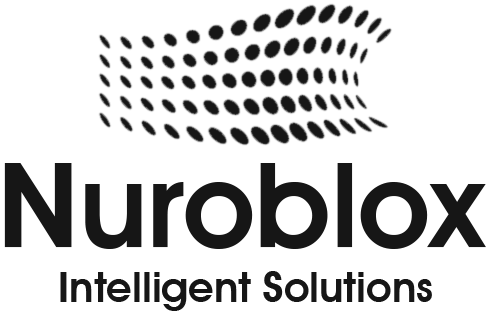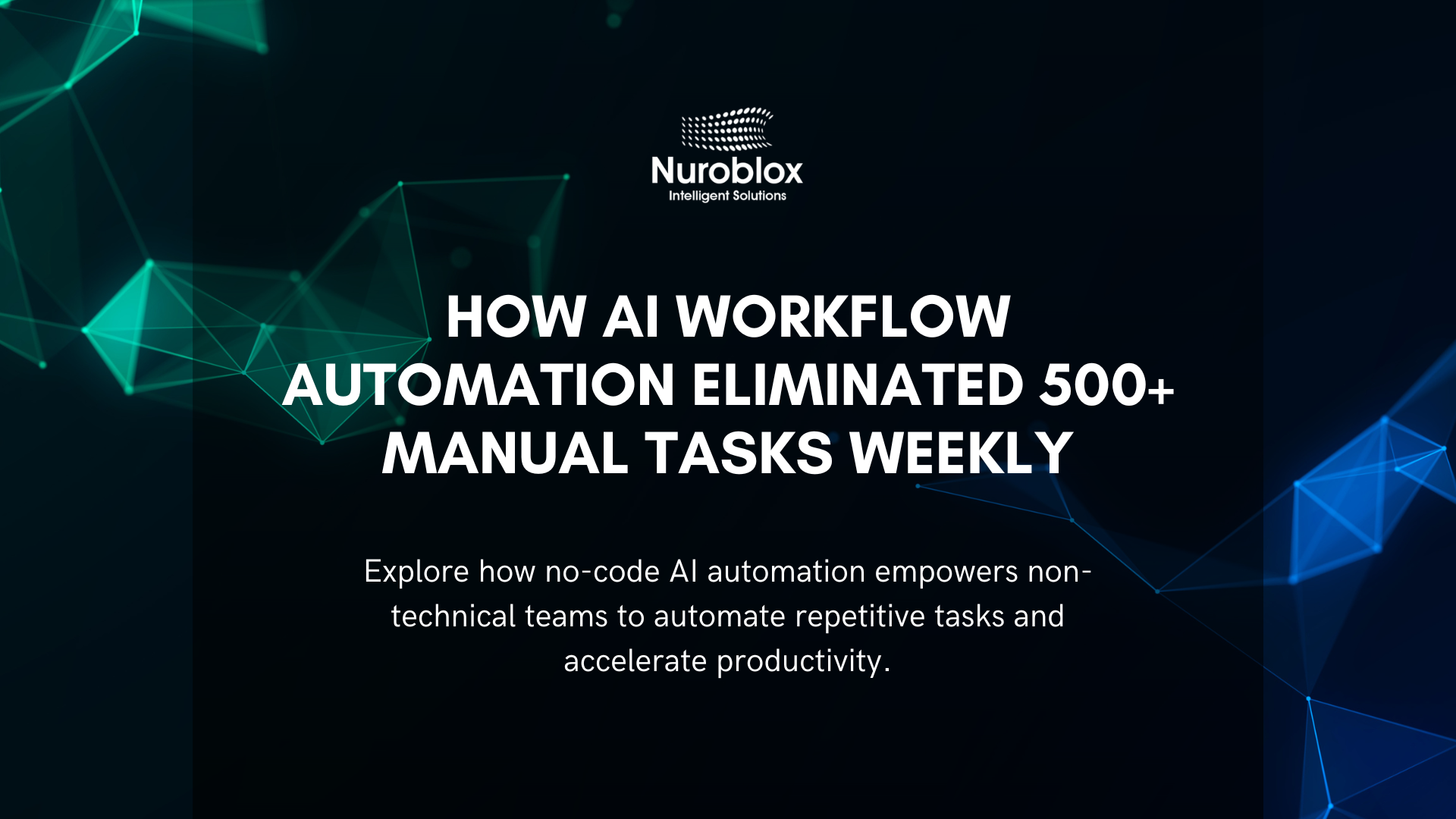How AI Workflow Automation Eliminated 500+ Manual Tasks Weekly
Modern businesses are drowning in repetitive, manual tasks that drain productivity, slow down innovation, and inflate costs. According to McKinsey, up to 70% of employees’ time is spent on routine work that is ripe for automation. For organizations looking to scale efficiently, this overhead is unsustainable. Enter AI Workflow Automation, a transformative approach that can completely eliminate hundreds of manual tasks each week, supercharging business performance and freeing up staff for high-value work.
This comprehensive guide explores a real-world use case where AI workflow automation solutions have successfully eliminated over 500 manual tasks weekly. Learn how leading enterprises are leveraging AI to redesign workflows, the dramatic results achieved, and how your organization can replicate this success.
What is AI Workflow Automation?
AI workflow automation combines artificial intelligence (like natural language processing, machine learning, and intelligent agents) with process automation platforms to streamline, automate, and even optimize complex workflows across departments. Unlike basic automation, which follows static rules, AI-powered tools can adapt, learn, and make decisions based on data and real-time context.
Key Capabilities
- Automating multi-step, multi-app processes
- Performing data extraction, analysis, and entry
- Identifying and eliminating bottlenecks through real-time insights
- Connecting disparate systems for seamless process orchestration
- Learning from outcomes to continuously improve automation flows
The Business Problem – Too Many Manual Tasks
Enterprises in industries such as finance, retail, healthcare, and professional services routinely face over 500 manual workflows per week in areas like –
- Data entry and reporting
- Customer onboarding and service requests
- Compliance documentation and audit trails
- Routine email communication and scheduling
- File management and approval routing
The results? High error rates, costly delays, staff burnout, and missed business opportunities.
Hidden Costs of Manual Work
- Productivity losses of 30% or more per employee
- High operational costs due to redundant processes and overtime
- Increased error rates, requiring expensive rework
- Slower response times, risking customer satisfaction
AI Workflow Automation – Solution Overview
Step 1 – Audit and Map Manual Workflows
A 2-3 week internal audit reveals the true number of manual tasks. Tracking every data entry, approval, or routine email highlights over 500 recurring tasks suitable for automation, collectively consuming hundreds of hours weekly.
Step 2 – Prioritize Tasks for Automation
Using a prioritization matrix, organizations target –
- High-frequency, low-complexity tasks (e.g., daily approvals)
- Processes involving multiple platforms/data sources
- Repetitive rule-based communication flows
Step 3 – Deploy AI Workflow Automation Platforms
Platforms like Lindy AI, Leap AI, and Activepieces connect across 300+ business tools to automate complex multi-step processes. Pre-built templates and no-code interfaces allow non-technical teams to launch automations in days not months.
Typical Automations Include
- Data capture and routing between email, CRM, and databases
- Automated report generation and instant distribution
- Natural language processing to understand and summarize emails or documents
- 24/7 self-service support bots that resolve employee or customer queries
- Multi-channel notifications and follow-ups
Step 4 – Scale and Optimize
Real-time analytics dashboards track time saved, error reduction, and ROI. Machine learning models continuously refine workflows, identifying new automation opportunities and reducing manual work to near zero.
Tangible Results – By the Numbers
- 500+ manual tasks eliminated per week in audited enterprises
- Productivity increased by 40%, letting teams focus on strategic initiatives
- Cost reductions up to 30% for process-heavy departments
- Processing times for key workflows cut by 70% (e.g., marketing campaign launches, customer onboarding)
- Return on investment 200–500% within 12 months for small to mid-sized organizations adopting end-to-end automation
- Error rates dropped by 60%, with AI flagging inconsistencies and potential compliance risks before they escalate
AI Workflow Automation in Action – Use Case Snapshots
Financial Services
A fintech company can replace weekly reconciliation, regulatory reporting, and client onboarding workflows with AI-powered automations. This eliminates over 600 manual tasks weekly, cuts costs by 33%, and improves audit readiness.
Retail and E-commerce
Retailers can adopt AI workflow automation for inventory updates, order processing, and customer service requests. Manual intervention in order fulfillment dropped by 80%, translating to faster delivery and higher customer satisfaction.
Professional Services
A consulting firm can use AI to automate scheduling, project tracking, and real-time status reporting across 20+ client projects. Over 500 manual steps per week can eliminate, freeing up time for high-value client work and deeper stakeholder engagement.

Start with a Workflow Audit
Document every recurring manual task for 2–3 weeks. Involve different functional units – sales, operations, finance, and customer support to build a holistic view.
Choose the Right AI Automation Tool
Select a platform that –
- Integrates with existing systems (email, CRM, ERP, databases)
- Offers no/low-code customization for rapid deployment
- Features analytics for monitoring and improvement
- Provides robust security and compliance controls
Prioritize “Quick Win” Automations
Target high-volume, low-complexity tasks first to show rapid ROI and build internal momentum. Examples include data entry, report generation, routine emails, and employee onboarding.
Scale and Optimize
Expand automation to higher-complexity processes. Use AI insights to refine and adapt workflows, minimizing manual overrides and exceptions.
Risks and Best Practices
Common Pitfalls
- Automating poorly documented or highly variable processes
- Ignoring change management and staff retraining
- Failing to monitor, measure, and refine automations
Success Factors
- Strong executive sponsorship and cross-functional involvement
- Transparent ROI measurement (time saved, error reduction, cost impact)
- Regularly reskilling teams to collaborate with AI solutions
Future-Proofing with AI Workflow Automation
Eliminating 500+ manual tasks weekly is no longer aspirational – it is emerging as the competitive baseline in the age of intelligent automation. Businesses embracing AI-powered workflow automation unlock exponential gains in productivity, cost control, and service quality, ensuring they stay ahead of digital disruption. As generative AI and intelligent agents mature, every routine task is a candidate for automation. The challenge is no longer whether to automate, but how fast can your organization reap the rewards?
What manual bottlenecks are holding your teams back and how soon will you deploy AI automation to reclaim that time?


